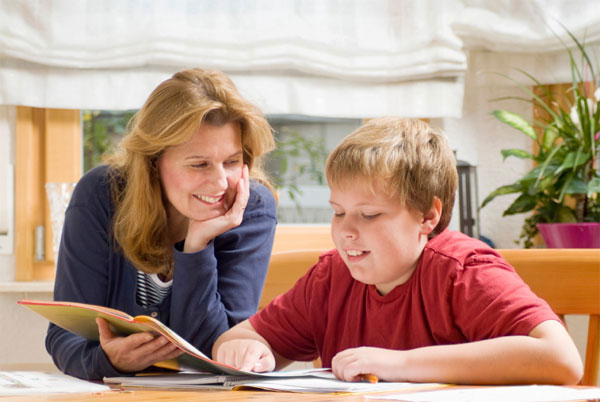Will online learning replace the classroom? A look at how lock down has changed how students are studyingBy Brian Parker
The Covid-19 pandemic continues to wreak havoc across nations, leaving in its wake economies that have been devastated and gravely affected the livelihood of millions upon millions of people, cutting across all strata of society. And, the madness has just only begun. The fact that the Corona Virus is here to stay, at least until a vaccine is developed and mass produced, which is a time-consuming process, leaves governments with limited options. Today the stark reality that stares us in the face is two-fold: we either learn to learn to live with the virus and get on with our lives or remain under perpetual lockdown. Clearly the latter is not feasible, so the show must go on.
India has been under lockdown since 24 March. The recently announced third extension of the lockdown is scheduled to expire on 17 May. Can we expect easing of restrictions? Perhaps in a very limited way. What can be said with certainty though is that businesses that attract large gatherings of people – entertainment outlets, hospitality, F&B, malls, educational institutions, sports events and the like, will continue to remain under lockdown mode for an indefinite period. Companies in the services sector were quick to understand the medium- to long-term consequences of the pandemic and moved to work-from-home mode which seems to be working well. Others have not been that lucky.
Living under lockdown is never easy, especially for a society that has never experienced such an event before. The physical and psychological stress can extract a heavy toll, much of which will manifest in coming months. The impact on children, in particular, will need to be carefully monitored and necessary resources will have to be made available to deal with the outcomes.
How will a prolonged lockdown affect the education sector, and will it eventually lead to online learning replacing the traditional classroom? This is a question that has been boggling the minds of educators, students, parents, government et al. ever since educational institutions were ordered closed because of the pandemic. This sudden lockdown certainly caught the schools and colleges unawares, and what has compounded the problem is the fact that nobody is sure when life will get back to normal and students can once again return to their institutions. Very few schools and colleges in the country are geared for any form of online learning. A majority don’t have either the technology or the resources for this activity. There is a plethora of other issues that plague the smooth working of an online education system, which will be discussed later.
The discourse on Covid-19 by experts is generally veering towards having to live with the virus for the foreseeable future, while scientists and pharmaceutical companies work feverishly on getting a vaccine into the market, and the healthcare system continues to make efforts at containment. Therefore, if we are to live alongside the Corona virus, then a set of new protocols will have to be enforced; in fact, what society will be looking at is ushering in a plethora of changes in lifestyle across all age groups. It probably would never be the way it used to be, so all stakeholders in the education system must adapt to this new normal. Sooner the better.
What has the disruption of the education system because of Covid-19 taught us? The overall impact is yet to be determined and analysed, but we know that the country is not geared to replace the classroom with online. The handful of schools and colleges that are providing online classes are already facing a variety of issues that does not augur well if there is to be a shift towards remote learning. From information gathered after speaking with parents, students and administrators a proper structure and policy framework should be the priority. There will be a different set of guidelines for pre-primary, primary, secondary and college levels as students are given the option to enrol in traditional classroom or a virtual one. Teachers will have to be trained to conduct a virtual classroom while students will need to familiarise themselves with the technology/tools for, besides listening, recording and taking notes. An important aspect is interacting with the teacher or professor on points of clarification etc. So, there is a whole lot of learning and familiarization process involved before any application can be made workable.
Online Vs Traditional Classroom
Comfort level, of the teacher and student, is a major factor when it comes to the traditional classroom. However, over the years education has become increasingly burdensome and costly. Educators will argue that managing an over-crowded classroom is unduly taxing and not much is accomplished as far as teaching effectiveness is concerned. Students on the other hand are required to carry a heavy load each day to and from school, which is turning out to be a health risk.
Speaking to a parent of a 4-year-old was quite revealing. She believes e-learning or home schooling, especially for pre-primary and even to some extent primary students, is much more time consuming and energy zapping than parents were initially led to believe!
To keep a 4-year-old away from all kinds of distraction and glued to the screen when the teacher doesn’t even at times refer to him or ask him a question is the biggest challenge. They need constant monitoring to ensure they are paying attention to the live sessions as well as completing their homework and assignments and posting the same on the group forum. For a working parent that is the hardest bit. One just doesn’t have the luxury of ensuring you are concentrating on the child enough. Most of the lessons too are tailored to involve parents which is a bit unfair. Since obviously the stay home parent rather than the working from home parent can spend more time and give more attention. This could well affect the child’s progress in class. On the flip side, however, parents get to see exactly where the child stands in terms of grasping or knowledge of reading/writing. And you also get to play a more prominent role in their education. In a class of 25 or 30 they are perhaps not able to get the close attention and monitoring that a parent is able to provide them.
A Kindergarten teacher admitted that the first week on online teaching was very challenging in trying to get students and their parents to understand the whole concept. “Personally, getting the attention of 25 little ones on screen was a struggle,†she points out. Week 2 set in with more ease and comfort for all. Instead of having the whole class for a live session, students were divided into smaller groups, which improved the level of attentiveness.
However, several parents found it problematic in coping, basically not having enough devices to access and use for children, having little siblings, and managing time. “Taking all of that into consideration, I started 1:1 session. While this method is proving effective, but now my week is packed, and I sometimes feel I am teaching more hours than I was on a normal school day,†she pointed out.
The challenge also lies with families who don’t have English as their first language. It became difficult for these parents to guide and support Distant Learning at home. Children with Special Education Needs also find, not having a structure hard to work at home. Children sometimes cannot see their parents as teachers. So again, lessons were broken down to their individual needs.
As a teacher she has a message for parents: “Each child is at a different level of learning and has their own capacity. I am a teacher and that’s my superpower, what I can’t fix is the social-emotional trauma that prevents the brain from learning. So, parents need to be calm, share their strengths and laughter with their wards. No kid is ahead or behind. Your children are exactly where he/she needs to be,†she signs off.
It is believed that kids, though they miss the physicality of interacting with their same age group, are more resilient than are given credit for. They enjoy the proximity with their family this time has given them, and as a result hopefully will grow up more confident. But nothing can beat the physical act of running and playing with your own age group. The most important developmental skill of interacting and learning, the give and take process, is sadly missing in e-learning.
These difficulties or drawbacks are not so pronounced when it comes to students of senior levels. In fact, they are comfortable and prefer a virtual learning environment over having to physically attend school or college. There is easy access to a variety of course learning materials, which is a major advantage in terms of time and convenience, and not having to commute daily to school/college takes away a lot of physical and mental stress. It remains to be seen whether a pure virtual learning environment will be cost-effective in terms of fee structure, course learning materials and having one-on-one time with teachers and professors, when compared to brick-and-mortar version.
Physical training and extra-curricular activities form important components of a wholesome education process. Educators and administrators will have to figure out how such activities will be integrated for students who opt for virtual classes.
Another major issue that is beginning to manifest is one of fee structure. Already there have been incidents wherein parents have taken exception to schools and colleges which have retained their fee structure despite no physical classes taking place. The argument put forth by management of educational institutions is that running expenses still must be taken care of, major being salaries of teachers and allied staff. This kind of structure is not sustainable in the long run. If there is a choice given to students between enrolling for a virtual and physical classroom option, then fee structures will have to be framed accordingly. In the ultimate reckoning there may not be much of a difference in fees between virtual and physical classroom learning options because management will have to invest heavily in technology to provide an effect yet interesting virtual environment that will make it easy for a teacher-student interaction. Moreover, there will be operational and other expenses involved on a regular basis.
It is being argued in academic circles that India as a nation has not paid much attention to digitalization of its education system, while emphasis and incentives have been given to most government departments and businesses in general. Had there been a robust online system in place, students would not have suffered from being away from schools and colleges for long periods. Obviously, there will be much catching to do and the pressure on teachers as well as students will be tremendous.
The pandemic should be an eye-opener for all stakeholders in the business of education. While it will be relatively easy for private institutions to garner resources and implement digital/virtual learning platforms, it is the government-run and government-aided schools and colleges that will need assistance in setting up their infrastructure and training modules.
In conclusion
There is still a long way to go before there is a seamless, comprehensive and high-quality virtual learning ecosystem in the country, which can be used by all students irrespective whether they are enrolled with CBSE, ISC or the state education board schools and colleges. Technology must support all regional languages as medium of education, so that there is a level playing field that will provide equal opportunity.
The Covid-19 pandemic has brought all economic and social activity to a standstill in the country. As we move into the fourth phase of the country-wide lockdown, it has become imperative to review and revise protocols which will gradually steer us back to normalcy. This is the appropriate time for all stakeholders in the field of education to come together and formulate credible and sustainable e-learning and virtual classroom models that could eventually provide an alternative to students to opt for traditional or virtual learning. Government along with the private sector must make this a priority and make it a reality.
How has Coronavirus pandemic affected the education system in India? Can online classes replace the traditional classrooms and learning? How will online learning affect the development of students? Discuss here. 






























